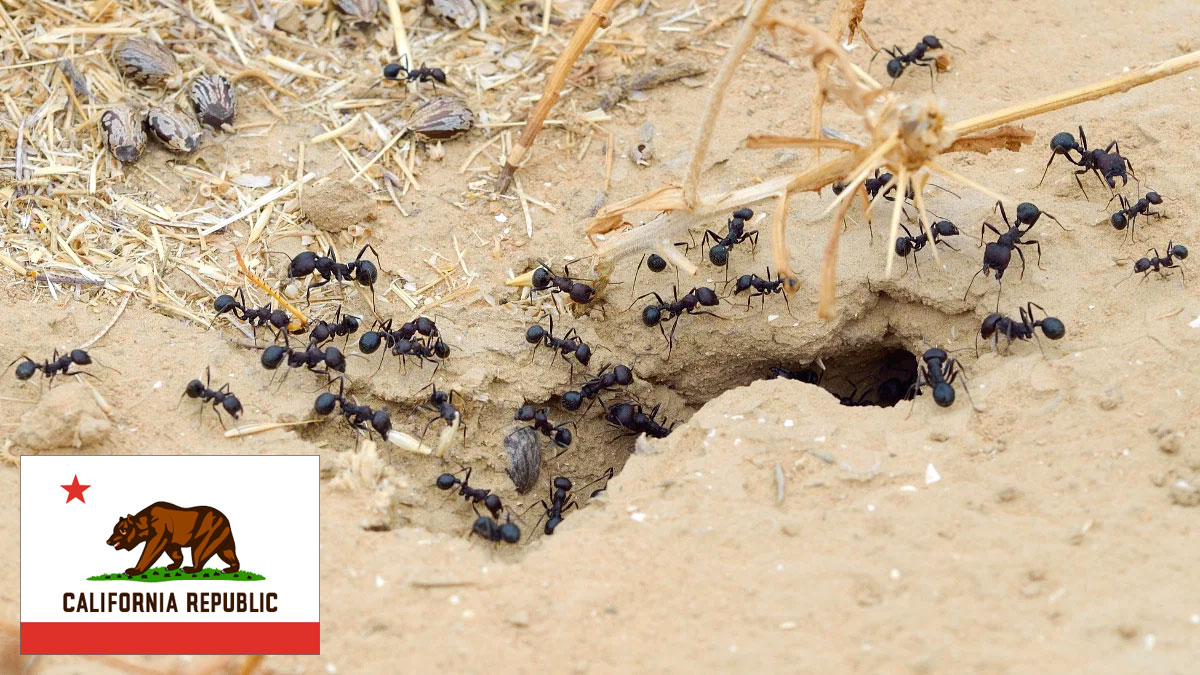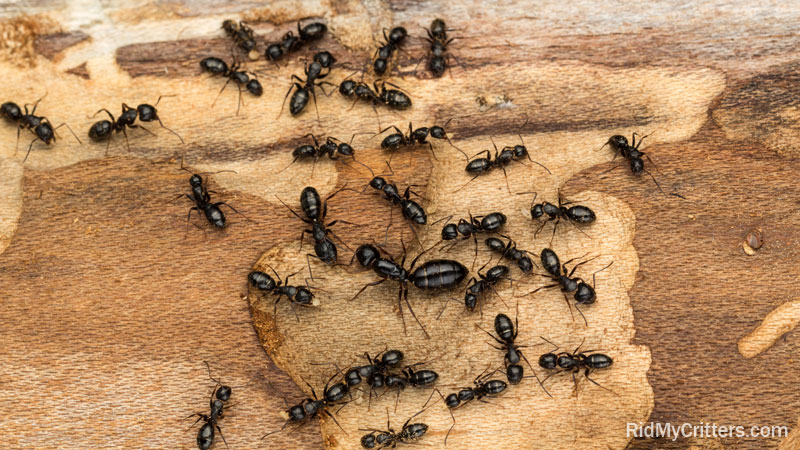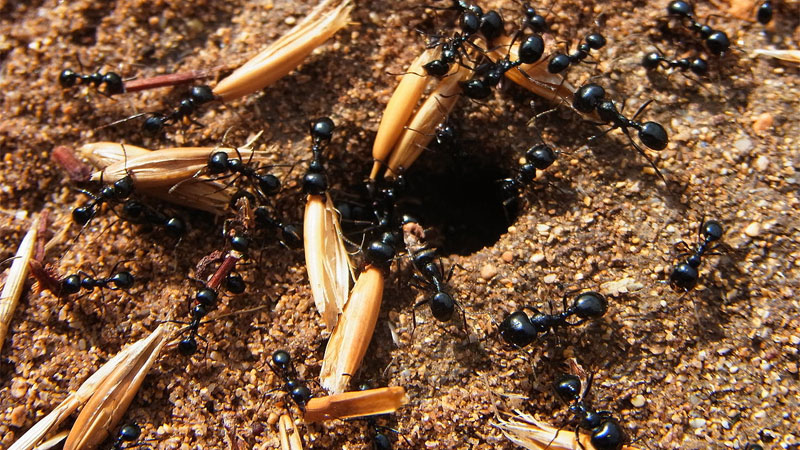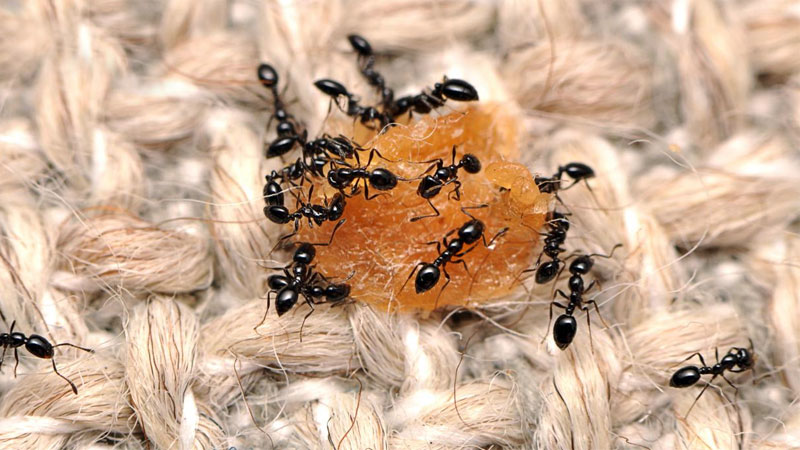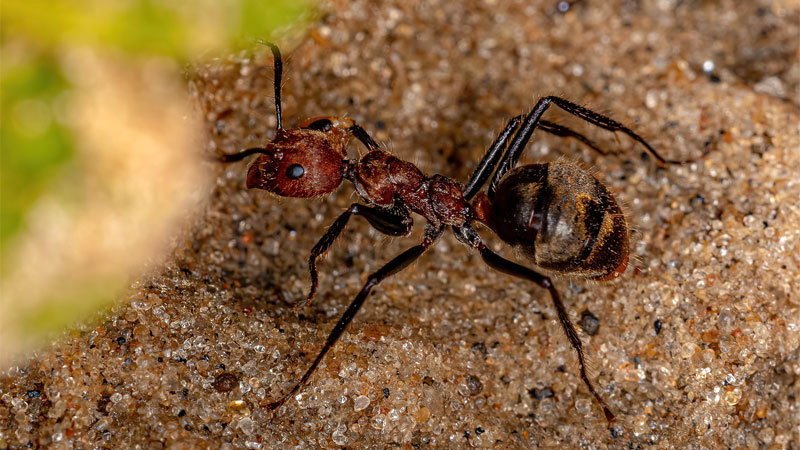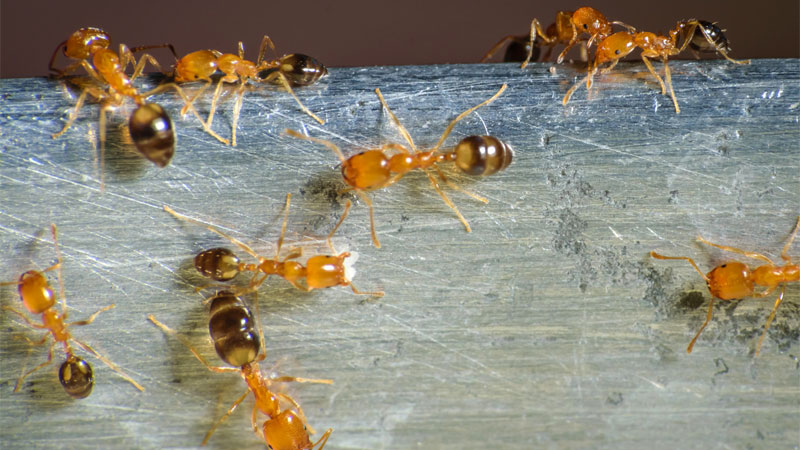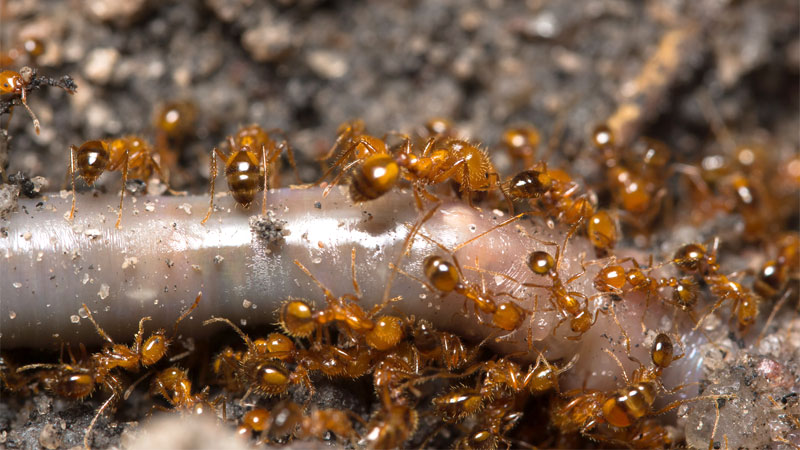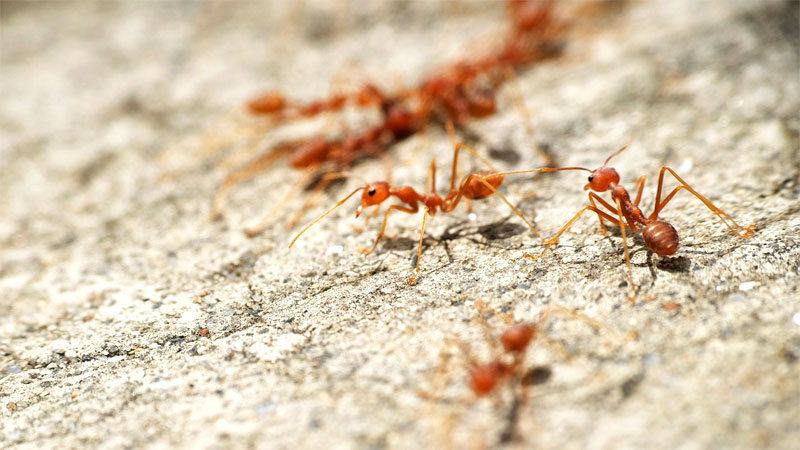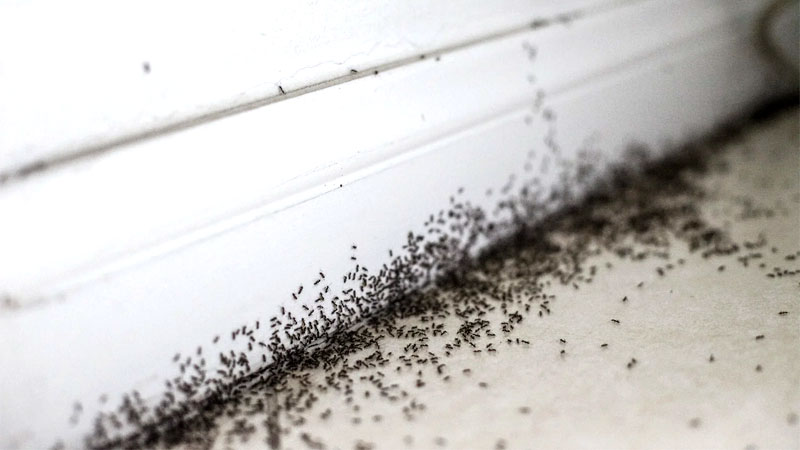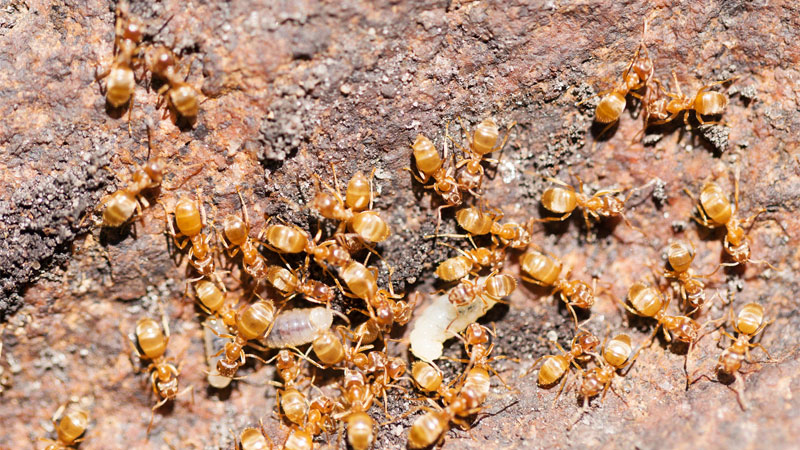There are more than 12,000 species of ants in the world, 700 of which are in the US. Thus, it should be of no surprise that there are a LOT of ant species in California alone. Let’s take a look at just a few of the more common ants in California, including some you may not want a visit from.
Related: 23 Types of Ants Found In Texas
Types of Ants Found in California
#1 – Argentine Ant (Linepithema humile)
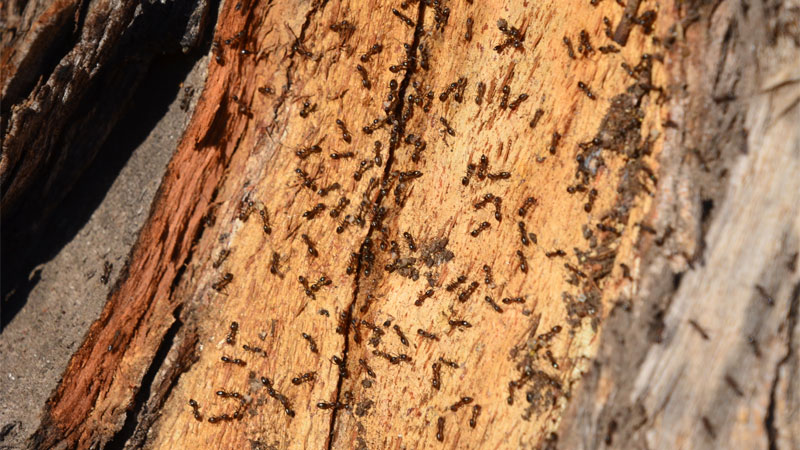
Measuring only about ⅛ inches long, the Argentine ant is a nasty piece of work. They build their nests underground but easily invade homes. Even worse, this is one of many species that have multiple queens per ant colony.
What makes this a problem is that a queen can take a handful of workers and create a satellite colony, resulting in a population explosion. Even worse, many common methods of fighting ants can send the colony into a panic, resulting in the queens producing eggs at a faster rate. Slow acting methods such as borax are therefore the best way to combat these common pests.
Another huge problem with these ants is that they are highly competitive. A single colony can out compete multiple native species. As a result, Argentine ants are a concern for homeowners and conservationists alike.
#2 – Carpenter Ant (Camponotus spp.)
Chances are, you’ve heard of carpenter ants. These critters are only ¼ to ½ inches long, but they have a huge reputation. They prefer to build their nests in dead wood, which has led to the myth that they actually eat the wood. In reality, carpenter ants feed on sugary liquids.
Of course, their notoriety stems from their habit of infesting the wood in buildings much like termites. This can lead to extensive structural damage. They’re also known to bite in self defense.
#3 – Harvester Ant
Also known as agricultural ants, there isn’t any specific species or genus called harvester ant. Instead, the term is used to describe any ant that collects mushrooms or seeds. They play a valuable role in the ecosystem by aiding in seed dispersal. Much of their food is kept in underground granaries, allowing them to seal their mounds for warmth during the winter.
Harvester ants are known to sting when their nest is threatened, and an angry colony can kill small mammals. Their attack begins with a bite, followed by a rapid sting, injecting a potent venom that can leave you in pain for several hours.
Some species are capable of multiple stings, whereas others leave their stinger in the victim, much like bees.
#4 – Little Black Ant (Monomorium minimum)
Believe it or not, there’s a specific species of North American ant called the little black ant. This common species measures about 1/16 inches long with the queens being twice as large. Expert scavengers, the little black ant will feed on almost anything, from honeydew and moth larvae to dead insects and even bird poop.
Their colonies can be found all over the place, usually underneath rocks or debris where they have some protection from predators. However, they are also known to infest homes. Colonies can have one or more queens, but even a multiple queen colony tends to have a population of only a few thousand.
#5 – Odorous House Ant (Tapinoma sessile)
This is one of the more annoying ants to invade your home, but not because of any potential damage. Instead, they’re a multi-queen colony notorious for their pungent odor. You see, the odorous house ant gets its name from the foul rotten coconut smell it gives off when crushed.
While preferring to build their nest under stones or other debris, they’re also not afraid to make your home theirs. That colony in your kitchen walls can lead to predatory pests, such as spiders.
Odorous house ants create the same problem as Argentine ants, making them a lot more difficult to exterminate. Their multiple queens can quickly spread out to create satellite colonies. If one of these colonies feels alarmed, it will begin reproducing at an increased rate, resulting in a population explosion rather than a population loss.
#6 – Pharaoh Ant (Monomorium pharaonis)
Despite their name, the pharaoh ant is actually tiny, measuring smaller than 1/16 inches long. It has a yellow to light brown body that’s semi-transparent and is notorious for invading not only homes but hospitals as well.
A single colony can take over an entire office block in less than six months. They have multiple queens, but don’t reproduce faster when threatened. Instead, they’ll often consolidate several larger colonies into a single small one until the danger has passed.
These ants love both sugary and greasy food sources, and will eat just about any food waste humans leave behind. Pharaoh ants are also known to be highly social and will often not only be friendly towards neighboring pharaoh colonies, but may even exchange residents.
They exhibit many behaviors that suggest a high level of intelligence, such as bathing themselves whenever they return to the colony, making coordinated forays into new territory, and choosing new colony areas based upon whether that area meets or exceeds the qualities from their previous colony.
#7 – Red Imported Fire Ant (Solenopsis invicta)
The red imported fire ant is an invasive species that has wreaked havoc on the ecosystem. Often referred to as RIFA for short, they come in a range of sizes, shapes, and colors despite being only one species.
This highly invasive species is notoriously aggressive, eradicating any other ants in their expanding territory and swarming anyone who threatens their nest, delivering painful stings that can become dangerous in large quantities. As a result, they may one day become the most common ant in California.
Colonies are often easy to spot, with mounds that can reach anywhere from one to eight feet tall. Each colony can house up to 100,000 ants, and there can be as many as 30 colonies in a single acre of land. RIFAs are believed to be a major component in the extinction or endangerment of numerous species, ranging from insects to birds and even some lizards and mammals.
Another notable problem with these invasive pests is that they are highly destructive towards crops. They’ll eat tree bark, new plant growth, and can ravage entire orchards or farms.
Even worse, RIFAs have a symbiotic relationship with Phenacoccus solenopsis, a species of invasive mealybug. This can lead to a population explosion in the mealybugs as well as a much larger RIFa population where the two species are found together.
See Also: 4 Best Fire Ant Killers
#8 – Southern Fire Ant (Solenopsis xyloni)
The southern fire ant is often referred to as the California fire ant despite being found throughout the southern US.
They exhibit a behavior somewhere between harvester ants and RIFAs, mixing the seed foraging habits of the former and destructive aggression of the latter. The good news is that their sting is a little less painful than the RIFA.
Unfortunately, the bad news is that they’re known to invade homes. They may build nests under debris, inside the woodwork or even masonry of a house, and sometimes build mounds. If they feel vibrations nearby, they will swarm out of the nest and attack the source, making them one home invader you’ll want to avoid at all costs.
#9 – Sugar Ant
Much like harvester ants, the term sugar ant refers to any species that exhibits a specific foraging behavior. In this case, any species that commonly invades homes and feeds on sugary substances is referred to as a sugar ant. Many of the species on this list classify as sugar ants, but there are many, many more that we haven’t covered.
In most cases, sugar ant infestations can be treated with the same methods. However, identification can be important in case you have Argentine ants or a similar reactive species.
#10 – Thief Ant (Solenopsis spp.)
The thief ants are true rogues within the ant kingdom. One of its more famous species is Solenopsis molesta, which has a wide range and is commonly a house pest. Colonies inside homes are known to be disease and parasite vectors. However, they play an important role in insect population control outdoors.
They get the nickname thief ant because most species like to build their colonies right beside those of other ants. From there, they’ll use their small size (which can range from 1/32 to ⅛ inches) to burrow a small tunnel into the nearby colony.
The thieves casually make their way inside, stealing food, eggs, and larvae to consume at their leisure. They’ll also actively hunt other insects or forage greasy proteins from human habitations.
#11 – Velvety Tree Ant (Liometopum spp.)
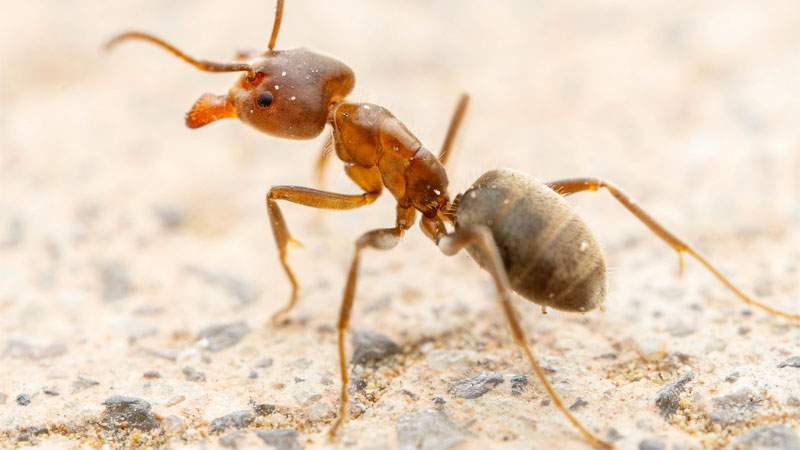
Velvety tree ants are best known for making their homes in trees, preferably near a water source. They’ll forage in a radius of several hundred feet in search of food, which may include foraging inside of homes.
Besides foraging, they have a symbiotic relationship with the caterpillars of certain butterfly species. In exchange for protection, the caterpillars provide a secretion that augments the ants’ food supply.
- How to Get Rid of Hawks - March 8, 2024
- How to Get Rid of Pill Bugs (Rolly Pollies) - March 1, 2024
- How to Get Rid of Groundhogs (Woodchucks) - February 5, 2024

